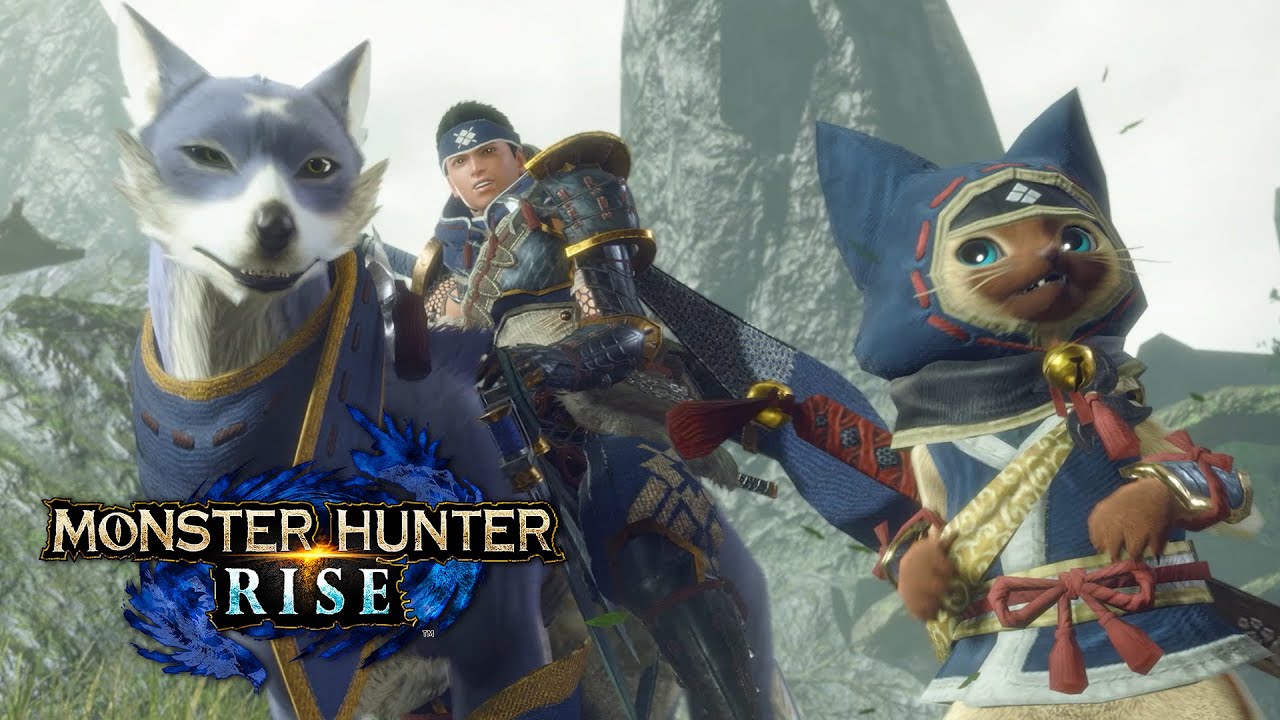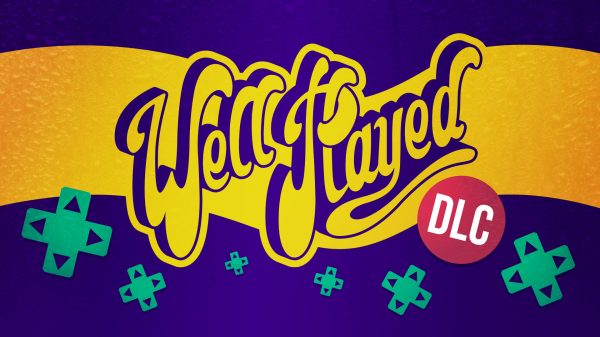To say that Monster Hunter has grown substantially over the last few years since the release of Monster Hunter: World in 2018 would be an understatement. The game very quickly became the single highest-selling game that Capcom has ever released. Part of this is due to its renewed accessibility compared to older titles, as well as it being the first mainline Monster Hunter title to be released on a non-Nintendo home console since Monster Hunter Tri back in 2010. Nintendo had held quite a tight grip on the IP, with the 3DS being the home of Monster Hunter for a number of years. World also marked the very first mainline title to be released on the PC (with admittedly mixed results at the time). As of December 2020, World has sold a staggering 16.8 million copies and the future of the IP has never looked brighter. While the mainline team has been officially done with the title and its subsequent expansion Iceborne (which we reviewed quite favourably), since September 2020, the portable team has been quietly working away at their next title, Monster Hunter Rise. Built on the RE Engine rather than the MT Framework engine that the games have been built on for years, Rise sees a merging of the classic Monster Hunter formula with the niceties and quality of life updates that World brought with it. After spending some time with the demo (which has come and gone), Monster Hunter newbie Eleanore and I have decided to pool our thoughts together to give a perspective on the game from both sides – as a newcomer and a returning fan respectively.
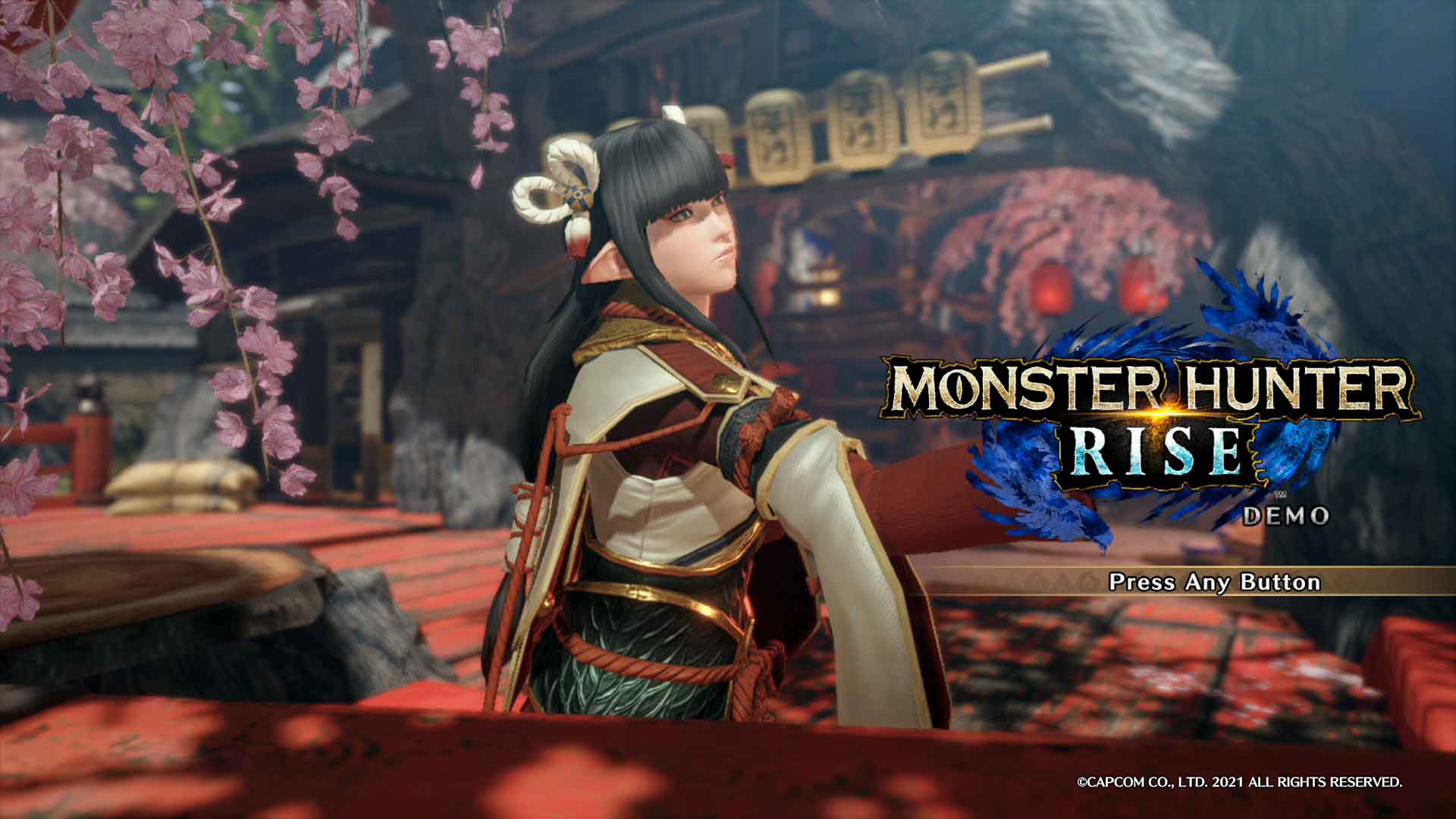
Gameplay and Accessibility
Eleanore: Even as a newbie I have heard plenty about the learning curve that is Monster Hunter and climbing that steep peak of knowledge has certainly been a contributing factor to why I hadn’t gotten into Monster Hunter much in the past. Having the demo was a really great choice as I love to try before I buy but also because of the two included tutorials that you could repeat as many times as you wanted with all the different weapons – so much choice! While I do have many mates who love Monster Hunter and had them on standby as a resource of MH knowledge, I feel that while there are many things that weren’t covered in the demo, but the essential stuff was given to you as you progressed. I really enjoyed what I was playing and I didn’t feel like I was hitting an insurmountable wall as I had in the past. Sure I started as a button masher, but after listening to the tutorial pop ups, looking at the weapon info and poking around in all the menus and inventory, I figured out the combos and what items did and went from a messy player getting constantly flung by monsters to a team player. Being able to play multiplayer in the demo with my friends all over the world was also really great fun, and the game performed really well. Starting out having never killed anything in Monster Hunter, by the end of the demo period I could solo all of the monsters including Mizutsune in the Intermediate Quest, so if that isn’t evidence of newbie accessibility I don’t know what is. If you’ve ever wanted to try a Monster Hunter game this may be your chance to jump in.
Jordan: So I have been fortunate enough to experience two forms of Monster Hunter. The new, incredibly accessible Monster Hunter (aka Fifth Generation) as well as a couple of the older Monster Hunter games – I’ve played some of Monster Hunter 4 Ultimate and a substantial amount of Monster Hunter Generations Ultimate (aka Fourth Generation) since playing MHW. I’ve been able to tangibly feel how the series progressed when the game transitioned from Fourth Generation to the Fifth Generation. For better or for worse, Fifth Gen Monster Hunter streamlined the experience a lot. This is not to say that the game isn’t still nuanced in its RPG mechanics and immersion, and the overall UI is considerably easier to read in MHW than it is in MHGU. The biggest and most immediate change you can feel in between these generations is the overall clunkiness. MHGU feels incredibly stiff and clunky compared to MHW. Even little things like not being able to change the direction of an aerial attack (I’ve missed so many jump attacks due to this) make the older games a much tougher package to swallow. However, there were some things in the older games that were much clearer than the newest title.
For starters, you could actually see the range of each monster’s roars and so you learned how you could space yourself to avoid being stunned by the roar without using the Earplugs buff. In World, you kind of just had to guess or dodge through the roar (I relied on the latter far too much, truth be told). This is something that MH Rise does feature and it is a nice return. Sure, players of close-range weapons like the Dual Blades or the Switchaxe might not directly benefit from this, but players with ranged attacks or fast enough movement to create gaps will benefit, which indirectly benefits close-range players. Keep in mind that if someone is stunned by a roar, they can be knocked out of that stun to get some free hits during the roar; this is an underappreciated strength of bow/bowgun users as just one tap from these players can give the whole team an advantage.
Fifth Generation MH games introduced one very important UI element – visible damage values. This gave you so much information in such a simple way. You saw how much damage you were doing each hit and you could also gauge where a monster’s weak points were. Previously, you weren’t really privy to this information, especially not during your first encounter with a given monster. While it was cool in older games to see your character grow in power only by knocking and stunning monsters all over the place, it made things very hard for new players to understand what was actually going on. Players were forced to learn how certain behaviours and reactions from monsters were the meter by which you gauged your performance, not visible stats. As such, with the introduction of visible damage values, the designers of the game relied a lot less on creating unique behaviour patterns outside of the standard limping and retreating to a designated den when the monster is low on health. MH Rise sees a merging of the two. There are distinct behaviours as well as visible damage values to ensure that both new and returning fans are easily able to understand information being conveyed; it also inadvertently makes the older games a little more accessible and new players that spend more time in this game will also learn how to read a monster’s behaviour and gauge how well they are doing from that. MH Rise definitely feels like the portable team is taking the best elements from the old and new titles.
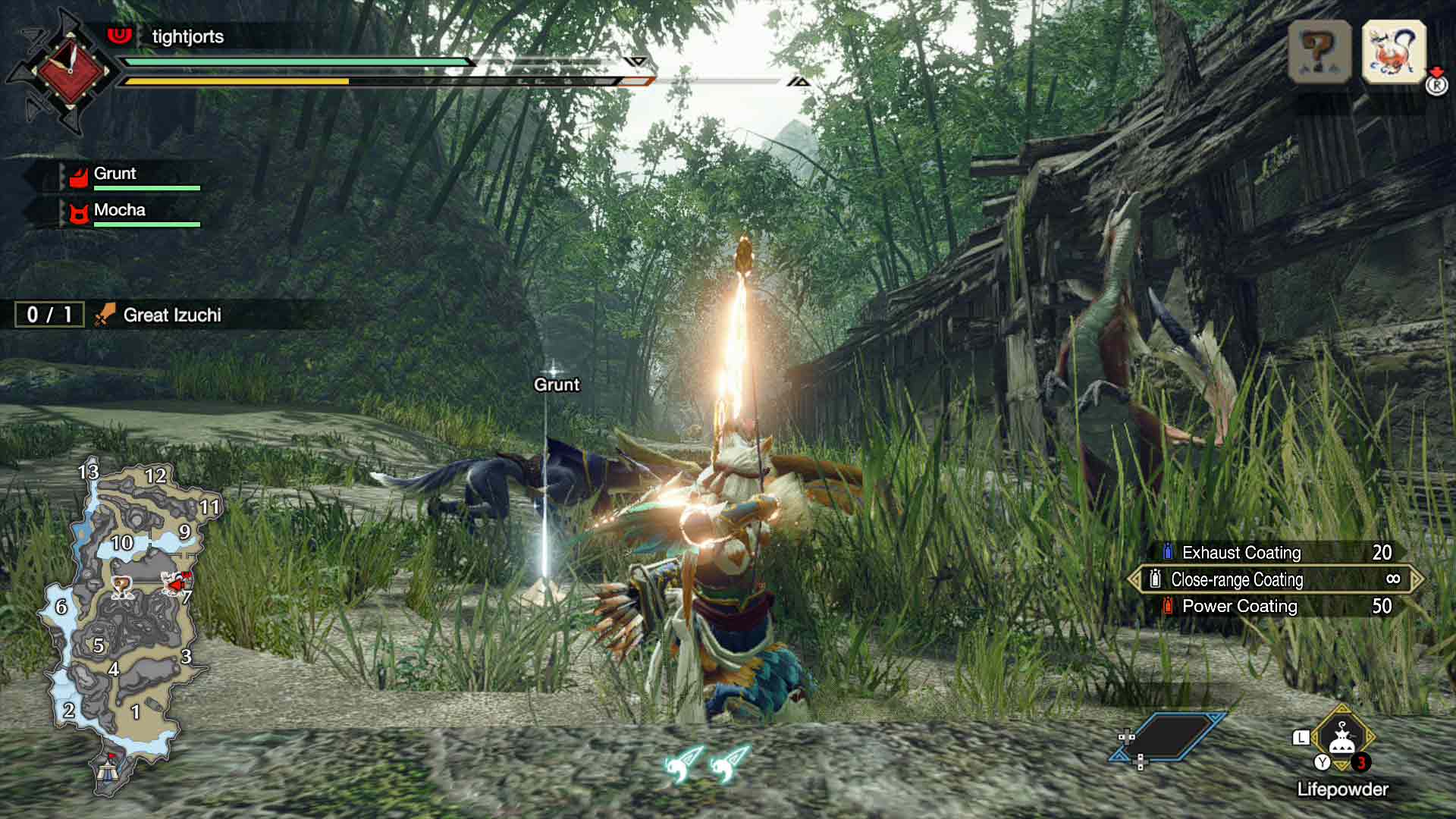
Mechanics and New Systems
Eleanore: A new game means new shiny things and everything that has been added to Rise is really sick. When I first saw the announcement about Wyvern riding I was super excited. From zooming around on a monster’s back to dealing a bunch of damage to itself or other monsters, I feel like this is a great new mechanic. Maybe it’s a bit overpowered (I can’t really say), but this is a demo after all and it’s fun and satisfying regardless. The wirebug is a form of endemic life that allows you to zipline and slingshot your way through the air and up cliffs but also in battle and for mounting monsters. Its use in silkbind moves is really cool though they do require some trial and error and there is still more we have to learn about them. In addition to the cute Palicos we also now have Palamutes who are really awesome. I love that they are customisable and that you can heal and prepare yourself on the go without losing stamina.
Jordan: MH Rise is not made by the core/mainline team, so I was expecting more experimentation in the gameplay than I was from something like Iceborne. MHGU experimented with Fourth Generation gameplay by adding the hunter arts system, which made it the most customisable and replayable game in the series. There were almost 100 large monsters to hunt and an incredibly large amount of variety in the skills and traits that you could equip each weapon type with. If you got bored, you could find a whacky new combination of skills to make the game feel fresh again. It’s why MHGU is one of my favourite games to return to; there are always new ways to play. MH Rise isn’t quite as flexible as GU, but it doesn’t exactly need to be. Rise’s shiny new core gimmick is the wirebug. Born from the core idea of the clutch claw, the wirebug affords an incredible amount of movement and agility to the players. Learning when and where is most appropriate to use your wirebug is paramount to success. Not only does it allow you to get around the map faster, it also allows you to perform unique attacks known as silkbind manoeuvres. While what a silkbind manoeuvre does will vary from weapon to weapon, it is an incredibly powerful skill that demands to be mastered. For instance, it will allow the Longsword to slow charge itself without needing to attack a monster, which means it can charge during stuns as well as area transition/traveling. This doesn’t mean you can absolutely spam your wirebug abilities as they are on a cooldown. This cooldown isn’t incredibly long, but if you are relying on the wirebug as your main source of movement in a fight you will quickly find yourself stuck (and probably KO’d).
Another unique gimmick born from MHW’s Iceborne expansion is the canine companion, the Palamute. It features the benefits of Raider Ride while adding some more moment-to-moment tactical benefits as well. You can use the Palamute to fight monsters, and players that are quick on their feet can use a combination of the Palamute riding with the wirebug to get the drop on a monster. I’m really keen to see all the outfits and gear you can give the Palamute as the previous games have always had really cool gear for the Palicos. Fun fact – I only played through MHW initially to get the Xeno’jiiva wedding dress for my Palico.
There are a few more changes to the general gameplay but I’ll save all of those for my review when the time comes, but I will mention one final core change – Wyvern riding. From what I could tell in my numerous hunts during the demo period, Wyvern riding serves as the replacement for mounting in this game. You can knock large monsters into a stunned state of sorts which allows you to mount them and do a number of things. If the monster being mounted is secondary (meaning not the one you are hunting), then you can use this monster to attack your primary target, dealing significant damage and knocking the monster over for your friends to attack freely without the risk of being KO’d. If the monster that is being mounted is the primary target then you just charge it into a wall a couple of times and then it will be knocked over, similar to how the clutch claw functioned, which is also why I am a little concerned. One big problem with the clutch claw in the later stages of Iceborne was the fact that it enabled so much extra damage that newer monsters had their health pool balanced around its use, so people that preferred a more organic experience were actively punished for not using the new feature. A better solution would have been to eliminate the damage that was done on impact when using the clutch claw and instead just leave it as a free topple for the monsters, that way players that did not wish to use the gadget weren’t being punished. I’m concerned that Wyvern riding will be as problematic because the damage from either wall charging or using another monster to attack is quite considerable.
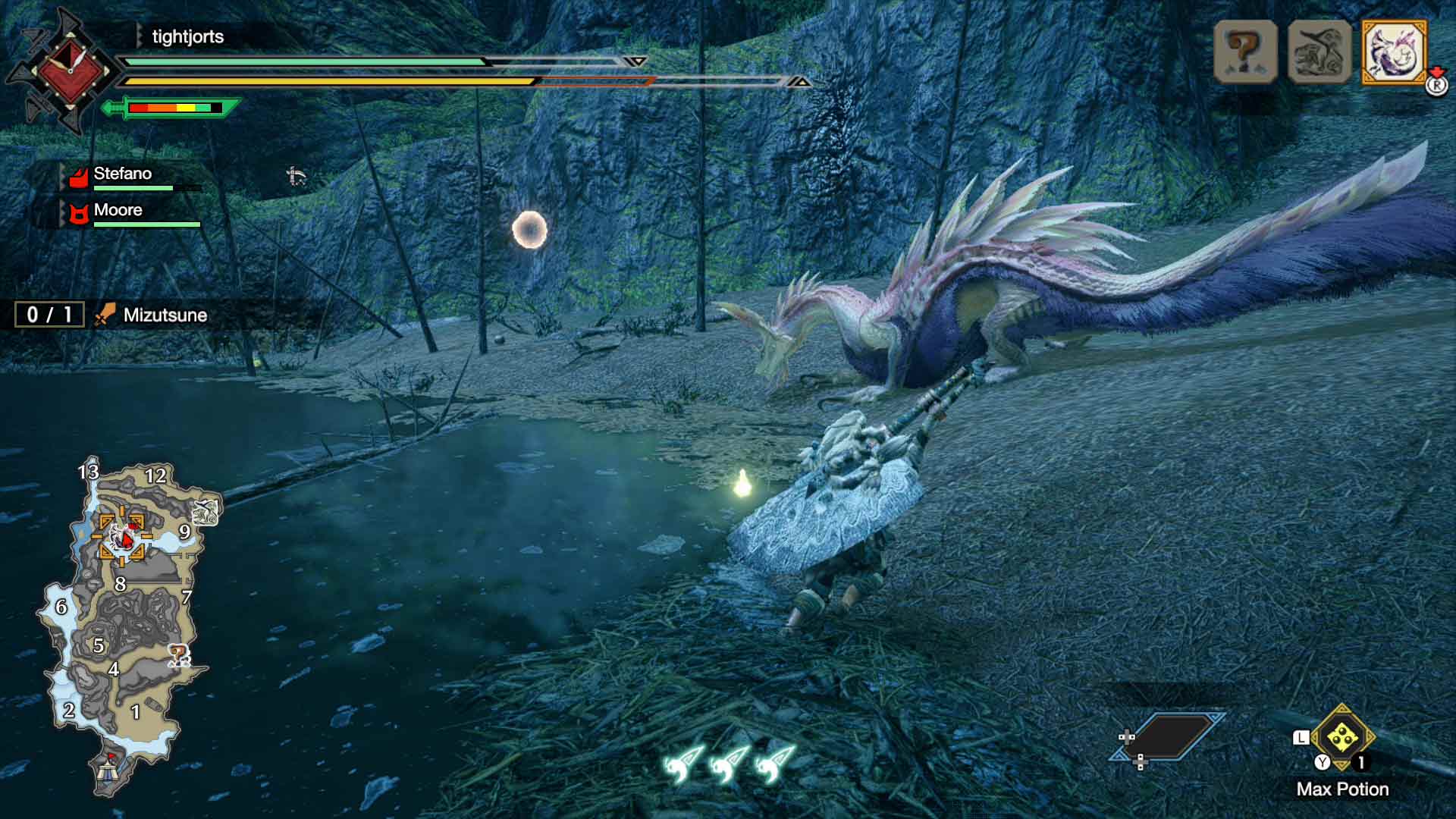
Exploration and World Traversal
Eleanore: The heavy emphasis on endemic life in Rise really gels with the exploration and natural aspect of the game environments which are really beautiful. The game rewards you for exploring high and low, from accumulating stat buffs from spiribirds as you clamber all over, to critters that can help you or do some nice damage to your prey. Some of the names are punnily great like Escuregot or Antidobra. Instead of heading straight to your target monster down the worn path I quickly learned you’re better off taking the long rugged way round, collecting goodies along the way. The height and ruggedness of the game environments are also easily traversable by the addition of the wirebug. While it takes a bit of practice, there is no fall damage so having a few goes and learning the limits isn’t a death-inducing experience. Having this essentially platforming aspect makes getting around really interesting and allows the terrain to be really diverse. Hunting for giant wirebugs and seeing where they fling you can help in traversing areas even faster. The mobility you get riding a Palamute is amazing, particularly when you use the derpy dash and I always took a Palamute on multiplayer hunts (sorry Palicos). Any team mate that accidentally took a Palico were effectively left behind or had to resort to wirebugging everywhere, but I guess it depends on what you need as to which you will choose – whether its buffs and harvesting (Palico) or attacking and mobility (Palamute). In solo runs you can get the best of both worlds which is really nice. I’m really looking forward to finding out how many areas there are to explore.
Jordan: The exploration was by far the worst part of MHW. The first map you were in was the Ancient Forest which was needlessly large and took forever to get around. Sure, it was very pretty and from an art standpoint I adored it, but in terms of design, it was a mess. MH Rise has a mish mash of design elements from classic and modern MH titles. No loading zones (thank God), one big map but not overly massive like the aforementioned Ancient Forest and a variety of channels and shortcuts. Add to this the increased verticality from the wirebug as well as the heightened movement speed from the Palamute and you have a recipe for interesting environments and exploration without keeping the player out of the action for too long. The endemic life now plays a much more integral role in your hunting experience, however I’m not so confident that it’ll be something that is for the better in the long run.
For those that are unaware, in previous MH games you would give yourself your health, damage, stamina and defence boost through the use of items like Nutrients and Armorskin. You would basically set it and forget it at the beginning of a hunt and only reapply these things if you fainted. MH Rise still has these things but also requires you to go around the map looking for songbirds for various buffs. This was really cool at first and I enjoyed there being a more immediate reason to explore the map, given the limited time allowed for a hunt. However, it can very quickly become a bit of an annoyance as you hunt more and more monsters and it also makes the UI/HUD a little more confusing, as the health and stamina bars appear to have more room for buffs but these buffs can only be obtained through songbirds. Whether there are different pieces of equipment that help alleviate this or not still remains in question but I am concerned that this idea will become quite an annoyance in the late stages of the game in the same way that the clutch claw changed from the cool new gimmick to something that changed the game’s balance for worse.
All in all, MH Rise definitely seems to have something for fans of the classic games as well as newcomers who are wanting a Monster Hunter experience that is not needlessly convoluted and obtuse. If Eleanore’s impressions are anything to go by, Capcom are right on the money when it comes to creating new Monster Hunter experiences that do a good job at easing new players into the core loop of Monster Hunter’s design. I, for one, cannot wait for March 26 where players all around the world will be able to delve into Capcom’s newest Monster Hunter title.




